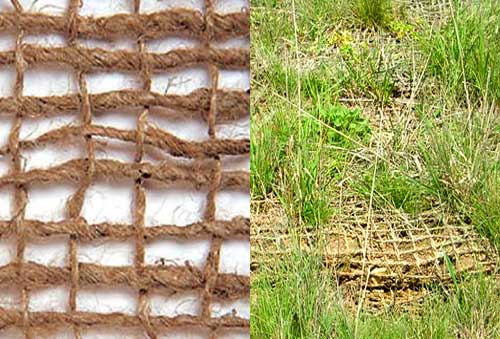- December 27, 2024
- Posted by: wellcoindustries
- Categories: Erosion Control, Jute Mesh
Introduction
Jute netting is a popular solution in landscaping and gardening, known for its ability to control soil erosion and support grass establishment. However, when it’s time to maintain your lawn, a common question arises: can you mow over jute netting without causing damage to your mower, your grass, or the netting itself?
The answer isn’t a simple yes or no—it depends on a few important factors. This article will guide you through understanding jute netting, the precautions needed for mowing, and the best practices to keep your lawn in top shape.

Understanding Jute Netting
What Is Jute Netting?
Jute netting is made from natural, biodegradable fibers derived from the jute plant. It’s an eco-friendly material often used in landscaping projects for its ability to prevent soil erosion, stabilize slopes, and provide a supportive base for newly seeded grass.
How Jute Netting Works in Lawns
When placed over a lawn, jute netting helps keep seeds in place, retains moisture, and protects the soil from being washed away by rain or irrigation. As the grass grows, the netting gradually breaks down, enriching the soil without leaving harmful residues. This makes it a practical and sustainable choice for landscaping.
Can You Mow Over Jute Netting?
Factors to Consider Before Mowing
The decision to mow over jute netting depends largely on:
- The Stage of Grass Growth: Mowing too early, when grass is still fragile, can harm the blades and disrupt the rooting process.
- The Condition of the Netting: Loose or exposed netting can tangle in mower blades, causing damage.
Potential Risks of Mowing Over Jute Netting
- Damage to the Netting: Aggressive mowing can tear the netting, reducing its effectiveness.
- Harm to Your Mower: Netting caught in the blades or rollers can lead to mechanical issues.
- Impact on Grass Growth: Improper mowing may uproot young grass or leave uneven patches.
Safe Mowing Techniques with Jute Netting
Wait for Grass to Establish
Before mowing, ensure your grass has grown tall and sturdy enough to withstand the mower’s blades. A general rule of thumb is to wait until the grass reaches at least 3–4 inches in height and has rooted securely into the soil.
Adjust Your Mower Settings
Set your mower to the highest cutting height. This prevents the blades from coming into contact with the netting and minimizes the risk of tangling or tearing.
Inspect the Area Before Mowing
Walk through your lawn and check for any exposed or loose areas of netting. Secure these sections with additional staples or pins to keep them in place during mowing.
Maintaining Your Lawn with Jute Netting
To ensure long-term success with jute netting, follow these maintenance tips:
- Regular Watering and Fertilization: Keep the soil and grass hydrated and nourished to promote healthy growth.
- Repairing Damaged Areas: If parts of the netting become loose or worn, patch them to maintain stability.
- Removing Netting: Once the grass is fully established and the netting begins to degrade, you can leave it to naturally decompose or remove any remaining pieces if necessary.
Conclusion
Mowing over jute netting is safe when done with proper precautions. By waiting for grass to establish, adjusting your mower settings, and inspecting your lawn beforehand, you can protect both your mower and the integrity of the netting.
With these tips, you’ll not only achieve a beautiful and healthy lawn but also make the most of the eco-friendly benefits that jute netting offers.
Have you used jute netting in your lawn or garden? Share your experiences or ask your questions in the comments below—we’d love to hear from you!
